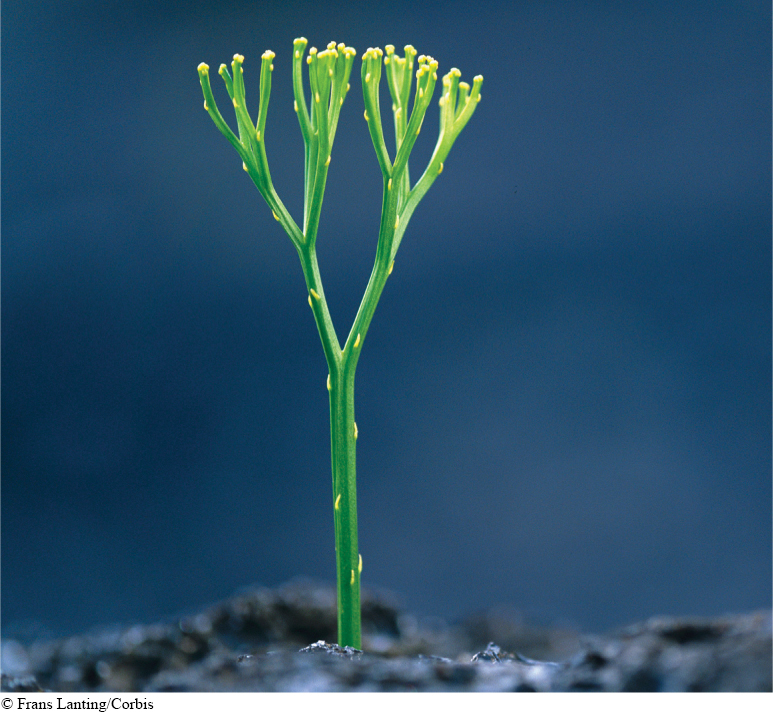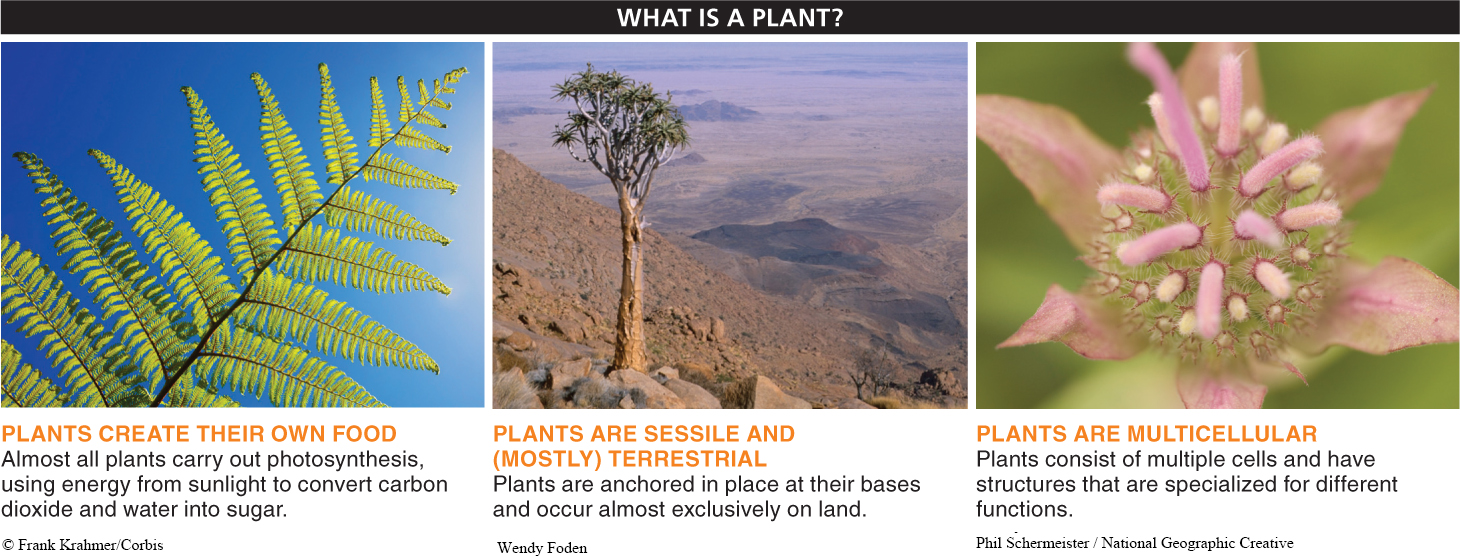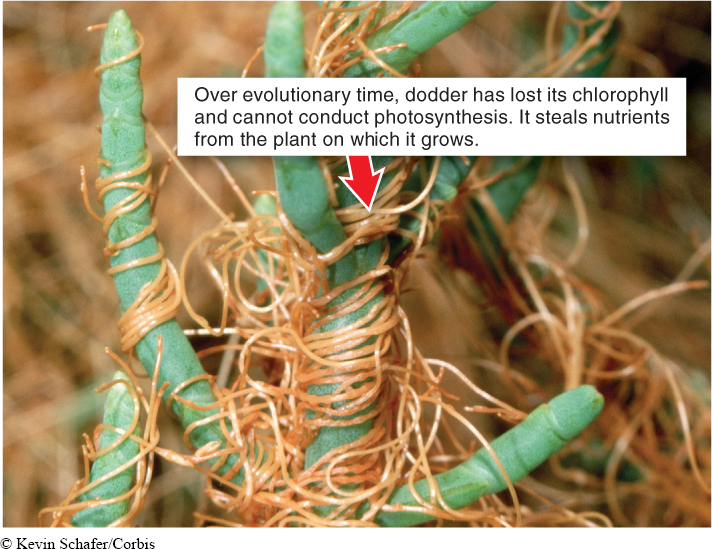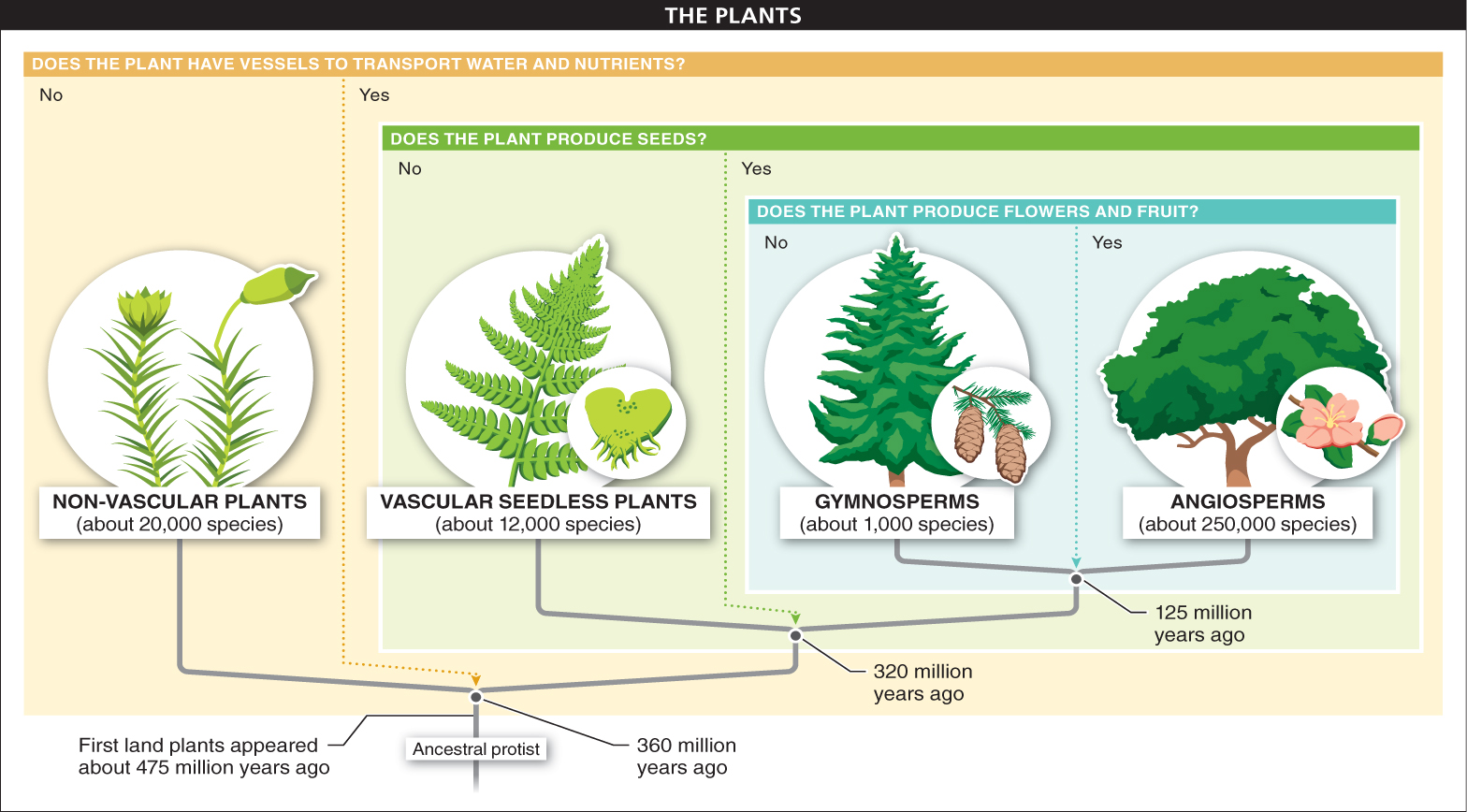
An animal can move from place to place to get food or water, to avoid being eaten, or to find a mate. It’s harder for a plant. It must do all the things an animal does—
So, plants are organisms that are fixed in place, but that’s only one aspect of being a plant. A plant is a multicellular eukaryote that produces its own food by carrying out photosynthesis, using energy from sunlight to convert carbon dioxide and water to sugar—

There are other multicellular and photosynthetic eukaryotes on earth, including many species of algae, such as seaweed, as well as aquatic species that are the closest relatives of land plants. They differ from plants, however, in that they live only in water or on very moist land surfaces. This is in sharp contrast to most plants, which can live even in deserts.
495
As we have said, most plants make their own food by the process of photosynthesis. However, a plant can’t live on carbohydrates—
When we think of plants, we often think of them as “chlorophyll-

If a plant growing in the shade can’t move to a new, sunnier location, how can it reach the available sunlight?
Plants that carry out photosynthesis need sunlight, and that creates a challenge for some plants. Think about plants growing on the floor of a forest. It’s mostly shady under the tree canopy, with just a few sunny spots where light penetrates the tree branches overhead (FIGURE 12-3). If a seed sprouts (germinates) in the shade, the young plant needs to somehow get to the nearest sunny spot. Plants can do that, of course, but not by moving. Instead, they grow toward the light. You may have seen a plant called a “lucky bamboo” (it’s not really bamboo), which can grow in spirals or loops. The growers have produced these shapes by moving the light source every few days, forcing the plant to bend to follow the light. If you buy lucky bamboo, you must continue rotating the light source or it will start to grow straight, like any other plant.

496
Sex can also be a challenge for an organism that is anchored in place by its roots. Not surprisingly, plants have a sex life very different from that of animals. Consider humans as a typical animal. From the moment an egg is fertilized by a sperm, a human has the diploid number of chromosomes—
Resisting predators is another challenge for organisms that cannot move. Running away is how most animals react to a predator, but plants have found other ways to defend themselves. Thorns, for example, are an anatomical defense that plants use to avoid predation (see Figure 12-
The earliest land plants were the first multicellular organisms to live on land. They were non-

TAKE-HOME MESSAGE MESSAGE 12.1
Plants are multicellular organisms that spend most of their lives anchored in one place by their roots. Characteristics evolved that made it possible for plants to successfully obtain food, reproduce, and protect themselves from predation on land, despite their inability to move.
Plants are not the only organisms that conduct photosynthesis. How do plants differ from these other organisms?
Unlike these other organisms (which include species of algae and other aquatic species), plants are not limited to living only in water or on very moist land surfaces. Plants can even survive and photosynthesize in deserts.
497